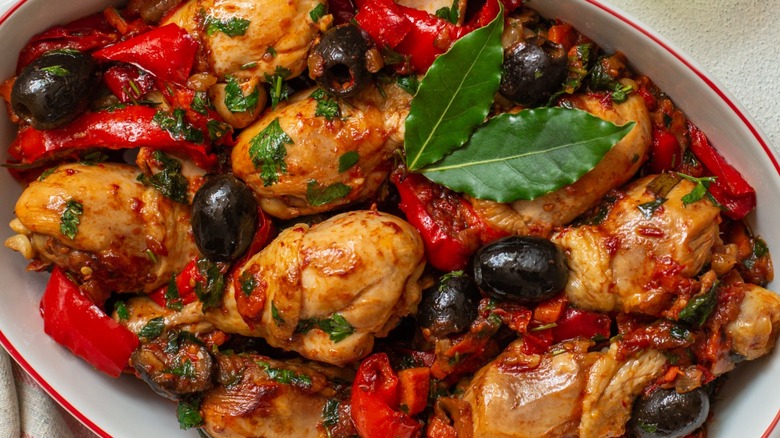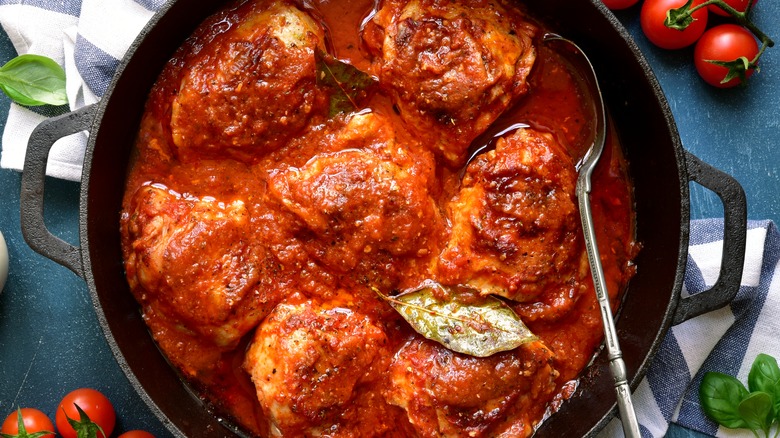The Cut Of Meat To Avoid When Making Chicken Cacciatore
As with many dishes in Italian cooking, the flavors of a cacciatore, or hunter's stew, vary from town to town and region to region. While other meats like duck, goose, rabbit, and veal can be used, chicken is the most well-known of all the meat choices for this rich, 16th-century stew. You need to be cautious, though, because not just any old cut of chicken will do.
Chicken is split into four major cuts: legs, thighs, wings, and breasts. Either legs or thighs, or a combination of the two, will work best for chicken cacciatore. Breasts, on the other hand, are really not suitable for this stew, especially if they are boneless or skinless. They cook far too quickly, and don't have nearly as much flavor as the other two. The reason for this is that chicken breasts are the leanest part of the bird. They have a tendency to dry out when overcooked, which is not what you want for a chicken cacciatore. Wings don't have enough meat on them to yield much flavor.
Instead, you want cuts that are bone-in and covered with skin. And while you can get chicken breast with bones and skin intact, there is another factor that puts thighs and legs above breast for chicken cacciatore. That factor is fat.
Fat is your friend
Fattier cuts of a chicken complete with skin are perfect for long exposure to heat and liquid, literally because of the extra fat, and the fact that they are rich with collagen. This is thanks to the presence of both the bone and the fat from the skin. Bone, in particular, helps keep the meat from drying out and becoming overly tough.
Chicken cacciatore is a braised stew that is jam-packed with flavorful ingredients. These include onions, peppers, olives, stock, tomato sauce, mushrooms, and, depending on the region of Italy, red or white wine. Everything gets simmered along with the chicken for at least 20 to 30 minutes. During that braise, the fat and collagen are allowed to gently release and be reabsorbed back into the meat. This helps tenderize the chicken and also flavor the overall sauce. What you end up with is wonderfully tender, savory chicken, stewed in a deliciously rich sauce.
The cacciatore can be served over a bed of rice (risotto Milanese is a traditional accompaniment), or crispy potatoes, and even tagliatelle. The key, though, is to make sure that you have cuts that are fatty and flavorful enough to be cooked perfectly at the end of the braise. The last thing you need, or want, is rubbery overcooked chicken.

